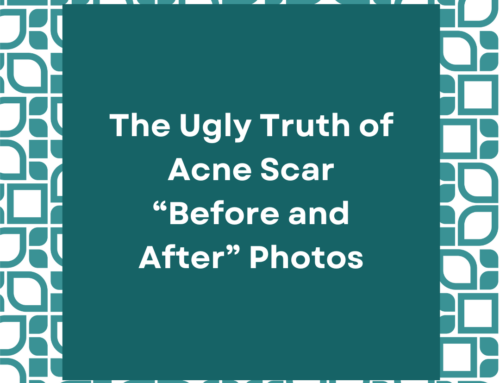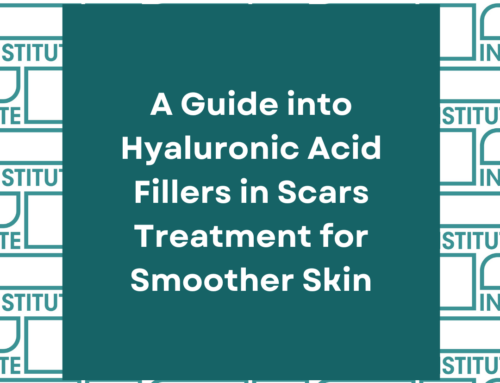Scars can be a significant source of distress for many individuals. Whether they’re a result of acne, surgery, injury, or another cause, finding an effective treatment to reduce their appearance is a common goal. Chemical peels are among the top treatments recommended by dermatologists for scar reduction and skin rejuvenation. In this comprehensive guide, we’ll explore what chemical peels are, how they work, the different types available, and how to choose the best one for scar healing.
Understanding Chemical Peels
Chemical peels are cosmetic treatments used to improve the appearance of the skin by applying a chemical solution that exfoliates the top layers. Once the top layer is removed, the new skin that grows back is usually smoother and less scarred. Chemical peels can treat various skin issues, including scars, wrinkles, discoloration, and even some types of acne.
How Chemical Peels Work
Chemical peels work by applying a solution to the skin that causes controlled damage to the outer layers. This damage prompts the skin to regenerate, producing new, healthy skin cells. The process also stimulates collagen production, which can help improve the texture and elasticity of the skin.
Types of Chemical Peels
There are three main types of chemical peels, each with varying depths of penetration and different active ingredients:
- Superficial Peels: These peels use mild acids like alpha hydroxy acids (AHAs) to gently exfoliate the outer layer of the skin. They are suitable for treating minor skin issues such as light scarring, mild discoloration, and rough skin texture. Recovery time is minimal, often just a few days.
- Medium Peels: Medium-depth peels use stronger acids such as trichloroacetic acid (TCA) to reach the middle layers of the skin. These peels are effective for treating moderate scars, deeper wrinkles, and more noticeable discoloration. Recovery can take about a week, with some peeling and redness expected.
- Deep Peels: Deep peels use potent acids like phenol to penetrate the deeper layers of the skin. They are typically used for more severe scarring, deep wrinkles, and significant skin damage. Recovery is longer, often requiring several weeks, and involves more intensive aftercare.
Choosing the Best Chemical Peel for Scar Healing
Selecting the right chemical peel for scar healing depends on several factors, including the type and severity of the scars, skin type, and overall skin health. Here are some considerations to help you choose the best peel:
- Type of Scars:
- Acne Scars: Superficial and medium peels are often effective for mild to moderate acne scars. For deeper, pitted scars, a deep peel might be necessary.
- Surgical Scars: Medium to deep peels can help reduce the appearance of surgical scars, depending on their depth and size.
- Hyperpigmentation: Superficial peels are typically sufficient for treating discoloration and hyperpigmentation associated with scars.
- Skin Type:
- Sensitive Skin: Superficial peels are gentler and better suited for sensitive skin to avoid irritation and excessive peeling.
- Oily or Acne-Prone Skin: Medium peels can help manage oil production and reduce acne scars effectively.
- Dark Skin Tones: People with darker skin tones should be cautious with medium and deep peels, as they carry a higher risk of hyperpigmentation. Consultation with a dermatologist is essential to avoid adverse effects.
- Overall Skin Health:
- Ensure your skin is in good health before undergoing a chemical peel. Avoid peels if you have active infections, open wounds, or certain skin conditions like eczema or psoriasis.
Popular Chemical Peels for Scar Healing
Here are some of the most popular and effective chemical peels for scar healing:
- Glycolic Acid Peels: Glycolic acid is an AHA that exfoliates the skin and stimulates collagen production. It’s suitable for superficial peels and can help with light scars and hyperpigmentation.
- Salicylic Acid Peels: Salicylic acid is a beta hydroxy acid (BHA) that penetrates the pores and helps clear out oil and debris. It’s particularly effective for acne-prone skin and superficial acne scars.
- TCA Peels: Trichloroacetic acid is used in medium peels to treat moderate scars, wrinkles, and discoloration. TCA peels can be tailored to different strengths depending on the desired depth.
- Phenol Peels: Phenol peels are the strongest and are used for deep peels. They can produce dramatic results for severe scars but require a longer recovery period and close medical supervision.
Preparing for a Chemical Peel
Proper preparation is crucial for achieving the best results from a chemical peel. Here are some steps to take before your treatment:
- Consultation: Schedule a consultation with a dermatologist to discuss your skin concerns, medical history, and the best type of peel for your needs.
- Skin Prep: Your dermatologist may recommend a skincare routine to prepare your skin for the peel. This might include using certain topical treatments like retinoids or bleaching agents to enhance the peel’s effectiveness.
- Avoid Sun Exposure: Minimize sun exposure and use a broad-spectrum sunscreen daily to protect your skin before the peel.
- Stop Certain Medications: Some medications, such as those that cause photosensitivity, should be discontinued before a peel. Your dermatologist will provide specific instructions.
Aftercare and Recovery
Aftercare is critical to ensure proper healing and maximize the benefits of a chemical peel. Follow these aftercare tips:
- Sun Protection: Protect your skin from the sun by wearing a broad-spectrum sunscreen and avoiding direct sunlight.
- Moisturize: Keep your skin hydrated with a gentle, non-comedogenic moisturizer to soothe and protect the new skin.
- Avoid Picking: Do not pick at peeling skin, as this can cause scarring and infection.
- Follow-Up: Attend any follow-up appointments with your dermatologist to monitor your skin’s progress and address any concerns.
- Gentle Skincare: Use gentle skincare products and avoid harsh treatments like exfoliants and retinoids until your skin fully heals.
Potential Side Effects and Risks
While chemical peels are generally safe when performed by a qualified professional, there are potential side effects and risks to be aware of:
- Redness and Swelling: It’s common to experience redness and swelling after a peel, especially with deeper peels. This usually subsides within a few days to a week.
- Peeling and Flaking: Peeling and flaking are normal parts of the healing process as the old skin sheds.
- Infection: There is a risk of infection if the skin is not properly cared for post-peel. Follow aftercare instructions closely to minimize this risk.
- Hyperpigmentation: Darker skin tones are at a higher risk of developing hyperpigmentation. Your dermatologist can recommend ways to mitigate this risk.
- Scarring: In rare cases, improper application or aftercare can lead to scarring. Always choose a qualified professional for your peel.
Conclusion
Chemical peels can be a powerful tool in the quest for smoother, scar-free skin. By understanding the different types of peels, their benefits, and how to choose the right one for your needs, you can achieve significant improvements in your skin’s appearance. Remember to consult with a dermatologist to create a personalized treatment plan that considers your unique skin type and concerns. With the right approach and proper aftercare, chemical peels can help you achieve the healthy, radiant skin you desire.
If you found this guide helpful, feel free to explore more skincare tips and treatments on our blog. Your journey to flawless skin starts here at Scar Healing Institute!
Schedule an Appointment
Scar Healing Institute
Scar Healing Institute is committed to developing the most effective treatments for scarring. Our team of scar revision specialists are continually inventing the latest technologies and formulas to deliver the best results for our patients.




